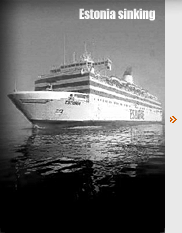
|

|

|

|

|
 9-11 Archive 2007
9-11 Archive 2007 The Toxic Smoke from the Rubble
The Toxic Smoke from the Rubble

The Toxic Smoke from the RubbleSeptember 13, 2007 "Clearing the Air" is a recent article written by Graham Rayman for the Village Voice (New York) that seeks to make sense of the claims being made by tens of thousands of New Yorkers who are suing the City of New York because of ill health, disease, or death thought to be caused by the "9-11 toxic cloud" and dust. "Sorting solid claims about the 9-11 toxic cloud from the obscuring haze of uncertainty," is the subtitle of the article. Unfortunately, the article failed to mention the extremely toxic smoke that rose from the burning rubble for nearly four months. See: http://www.villagevoice.com/news/0736,rayman,77703,2.html Having met New Yorkers who have been severely affected by a host of chronic diseases caused by exposure to the dust and smoke from the destroyed World Trade Center, I have seen how the toxic plumes and clouds devastated so many lives. While I appreciate Rayman's work, "Clearing the Air" misses one very important aspect. I am responding for the benefit of those who have been affected by the toxic dust and smoke, those who care for them, and those who litigate on their behalf. Rayman wrote: The World Trade Center health crisis is a saga told on a massive scale. Consider: 10,000 people have signed up for the pending class-action lawsuit against the city, and 71,000 for the city's World Trade Center Health Registry. Nearly 20,000 people have been screened in Mount Sinai's medical-monitoring program. More than 1,300 people have been treated at the city-funded WTC clinic at Bellevue Hospital. The estimated number of Ground Zero responders is 40,000, and the estimated number of people who came in contact with the dust is 410,000. Yes, but how many people were exposed to the toxic smoke that wafted over New York City for the next three months? SMOKE vs DUST First, it needs to clarified that there were primarily two types of "toxic cloud" caused by the destruction of the World Trade Center. Rayman writes about the visible dust seen in the pyroclastic clouds that rolled down the streets of lower Manhattan after the explosive demolition of the twin towers and Larry Silverstein's WTC 7. But he is missing the smoke that rose from "the pile" until Christmas 2001. It needs to be remembered that extremely hot spots burned beneath "the pile" for more than three months until they exhausted themselves at Christmas 2001. These hot-spots were evidently hotter than the boiling point of iron (2861 degrees Celsius or 5182 degrees Fahrenheit) and many other metals. Molten iron, in the molten state, was found in the basements of all three towers weeks after they were demolished. These hotspots, which the evidence suggests were caused by on-going aluminothermic reactions fueled by massive amounts of Thermite, continuously produced a huge amount of extremely small particles in the nano-size range that rose from the pile in plumes of bluish smoke. This smoke laden with toxic nano-particles wafted over New York City for many weeks and went in all directions. Millions of people may have been exposed to these toxic plumes which can carry toxic particles great distances. I visited the University of California at Davis in the spring of 2006 to interview Thomas A. Cahill, an expert on airborne particles. Cahill had conducted a study of the particles in the thin bluish smoke that rose from the rubble for nearly 4 months after 9-11. Cahill's air sampling was done a few blocks north of the destroyed WTC and began on October 2, 2001 and continued until late December, when the last fires were finally extinguished. I asked Cahill why it had taken so long to begin monitoring the air contamination caused by the destruction of the WTC. He said that he had assumed that there were scores of agencies and scientists monitoring the air quality in New York City after 9-11. "I assumed it was happening. I could not believe it was not," Cahill said. "It [the Davis DRUM] was all by itself. The EPA did nothing." Cahill's air monitoring device revealed the presence of extremely small metallic aerosols in unprecedented amounts in the plumes coming from the burning WTC rubble. Most of the particles in these plumes were in the category of the smallest ultra-fine and nano-particles: from 0.26 to 0.09 microns. For the people who worked or lived near "the pile" of the destroyed World Trade Center, these plumes were extremely dangerous. IRON BOILED IN THE RUBBLE The conditions were "brutal" for people working at Ground Zero without respirators and slightly less so for those working or living in adjacent buildings, [Thomas A.] Cahill, a professor emeritus of physics and atmospheric science, said. "It was like they were working inside the stack of an incinerator," he said. "The debris pile acted like a chemical factory. It cooked together the components of the buildings and their contents, including enormous numbers of computers, and gave off gases of toxic metals, acids and organics for at least 6 weeks," he said. The DELTA Group's work revealed the presence of extremely small metallic aerosols in unprecedented amounts in the plumes coming from the burning WTC rubble. Most of the particles in these plumes were in the category of the smallest ultra-fine and nano-particles: from 0.26 to 0.09 microns. The extraordinarily high level of ultra-fine aerosols was one of the most unusual aspects of the data, Cahill said. "Ultra-fine particles require extremely high temperatures," Cahill said, "namely the boiling point of the metal." While Cahill said he was not aware of evidence confirming the existence of molten metal in the rubble of the WTC, his data showing high levels of ultra-fine particles in the smoke plume prove that incredibly intense hot spots, capable of boiling and vaporizing metals and other components from the debris, persisted beneath the rubble for weeks. THE PARTICLE EFFECT These nano-particles are so small that they behave completely differently in the body than the much larger particles that were seen in the pyroclastic dust clouds of 9-11. The nano-size particles are so small, i.e. smaller than one-tenth of a micron, that they can pass freely throughout the human body and are able to penetrate the nucleus of the human cell. This is the reason why the "particle effect" is so harmful. Having penetrated the cell nucleus, the particle can cause a host of chronic diseases and cancers. It should be noted that the nano-size particle is very dangerous because of its size, and substances that are not normally toxic may be extremely toxic when reduced to such small particles, e.g. Teflon. Having studied the particle effect with depleted uranium, I have written about it in greater detail. This is why the two main sources of toxic particles: the dust and the smoke have to be considered as causes of disease and death among the people who worked or lived near the destroyed WTC. The "particle effect" is from another universe than the much larger dust particles. The Village Voice article does not mention the fact that those who worked on "the pile" were exposed to the extremely toxic smoke of nano-size particles. No respirator can stop nano-particles. For example, Rayman mentioned that a police officer named Cesar Borja, who had worked at Ground Zero in December 2001, died of pulmonary fibrosis: At least 12 deaths from lung ailments and cancer have been blamed on the dust cloud in press reports. Among them is firefighter Ray Hauber, 47, who died of esophageal cancer. Friends and family say Hauber was a healthy man who didn't smoke. In two of the cases -- those of Police Officer James Zadroga, who died of pulmonary fibrosis, and lawyer Felicia Dunn Jones, who died of sarcoidosis -- local medical examiners agreed that exposure to the dust was a factor. Another was that of Cesar Borja, a police officer who died of pulmonary fibrosis. Initial reports said that he'd worked 16-hour shifts at Ground Zero, but records subsequently showed that he worked there only 17 days, starting in December 2001 -- casting doubt on whether his fatal illness stemmed from his time at Ground Zero. Rayman said there was doubt that Borja's fatal illness resulted from his time at Ground Zero because he had worked on, or near "the pile" for "only 17 days." On the contrary, the fact that Borja was not exposed to the "dust cloud" but only worked at Ground Zero in December is prima facie evidence of just how toxic the smoke rising from the rubble was. "In the six years since the attacks, we have accumulated a mountain of evidence that tens of thousands of those exposed are suffering from chronic respiratory disease and, increasingly, a variety of rare cancers," Rep. Jerrold Nadler said during a June 25 congressional hearing. "Increasingly, a variety of rare cancers," Nadler said. This is exactly what occurs in a population exposed to large amounts of toxic nano-particles. The people of Iraq and veterans of the war, for example, are suffering from an epidemic of rare cancers following exposure to nano-size particles of uranium from depleted uranium munitions. BLOOMBERG SCHOOL OF PUBLIC HEALTH "In courtrooms, hearing rooms, and government offices, there is a paper war raging between people who claim they are sick, and the city, state, and federal agencies that must decide whether to pay for their medical coverage," Rayman wrote. "More than 3,000 firefighters have sought respiratory treatment since 9-11. Retirements based on lung problems have risen by four times the previous average. The observed drop in lung function after 9-11 was 12 times greater than the average annual decline in the five years before 9-11." About 116 line-of-duty disability claims by NYPD police officers who responded to Ground Zero have been approved, according to the New York Sun. But more than 3,000 have yet to be resolved. Rayman's article cites an article published in the New England Journal of Medicine of May 2007. This article about the dust was written by epidemiologists Jonathan Samet and Alison Geyh of the Johns Hopkins Bloomberg School of Public Health. "More than 5 years after the World Trade Center disaster on September 11, 2001, uncertainty and controversy remain about the health risks posed by inhaling the dust from the collapse of the twin towers, the subsequent fires, and the cleanup effort," Samet and Geyh wrote. "What's clearest and strongest is in the immediate persistence of effects on the respiratory system of the more exposed," Samet told the Village Voice. "Where the uncertainty begins is when one tries to understand the consequences for the broader public and the longer-term effects." "Even though people exposed to the cloud may be inclined to blame any future illness they contract on that exposure, Samet and Geyh write that the only way to confirm a link is through epidemiological studies that examine a large enough population of exposed people and compare it to a similar population of people who weren't. But that vast and difficult study has yet to be done," Rayman wrote. "Even the full suite of research efforts in progress may never produce the evidence needed to answer all of the questions that will be raised about the long-term health effects of September 11," Samet and Geyh concluded. Wait a minute. What was the name of the school these professors work for? The Bloomberg School? As in Michael Bloomberg, the mayor of New York? Sure enough, Jonathan Samet and Alison Geyh work for the Bloomberg School of Public Health at Johns Hopkins University. The school is named for Michael R. Bloomberg, the current mayor of New York City, who donated something like $100 million to Johns Hopkins in 2001. New York City is currently fending off huge class-action lawsuits for the health damage and death caused by the dust and smoke from the destroyed World Trade Center. The sick people have sued the city for compensation, but not a single worker had been compensated by late July 2007. The sick rescue workers from the World Trade Center site filed a lawsuit charging that a $1 billion insurance fund set up after 9-11 had violated a congressional mandate to pay their injury claims. The suit alleges that WTC Captive Insurance Co., which is controlled by New York City, has drained the money meant for the affected workers, who say that their exposure to toxic dust caused serious illnesses. "Not a single rescue worker who became sick has seen a penny of this money," said David E. Worby, the lawyer who filed the suit in the state Supreme Court in Manhattan. "It's torturing our people who are sick and dying every day." Now I understand why the professors from the Bloomberg School of Public Health seem to have a less than can-do attitude about finding the links between the dust and smoke, and the very sick people of New York City. "The main reason we don't have more information is that the federal government hasn't done the research," Rep. Carolyn B. Maloney (D-NY) said. "The answer is not unknowable." In late 2006, the Mount Sinai WTC Medical Monitoring Program published a five-year assessment of affected workers. The Mt. Sinai study involved 9,442 responders who were tested between July 2002 and April 2004. According to the article in the Village Voice, the results are extremely grim: Sixty-one (61) percent of the workers without prior symptoms developed breathing troubles after 9-11. Sixty-nine (69) percent reported new or worsened respiratory symptoms after being involved in WTC work. Fifty-nine (59) percent had symptoms that persisted. "THIRD WAVE" "There should no longer be any doubt about the health effects of the World Trade Center. Our patients are sick," Dr. Robin Herbert, co-director of the Mount Sinai program, said. "In particular, dozens of cases of blood-cell cancers—like lymphoma and multiple myeloma—among relatively young Ground Zero workers have raised these concerns, Rayman wrote. "Herbert, the Mount Sinai researcher, was quoted as suggesting that such cancers could become a 'third wave' of ailments." This is exactly the kind of damage the particle-effect causes. The "third wave" will most likely be seen by the rare types of cancer and other diseases caused by toxic nano-size particles that wreak havoc in the human cells they have penetrated. The "third wave" may be worse than the first wave. Not long before she died from lung cancer, lower-Manhattan resident Etta Sanders wrote an essay that was published in the Tribeca Tribune. Sanders blamed her illness on exposure to the dust and smoke from the World Trade Center. "If the government had said we're not sure about the safety of the air and it would be prudent for residents to stay away, I don't think I would have this cancer," she wrote. "I dearly hope that I am in a small minority of people who were so gravely harmed by the aftermath of the WTC attacks, but I fear otherwise."
|
©2010 Christopher Bollyn | Sitemap | [email protected]

